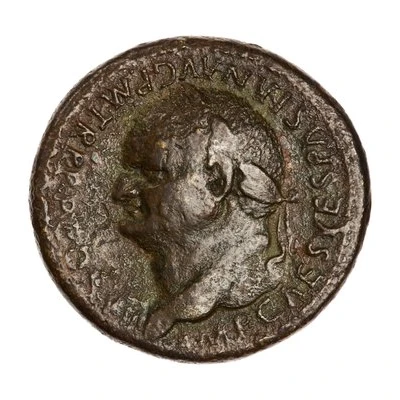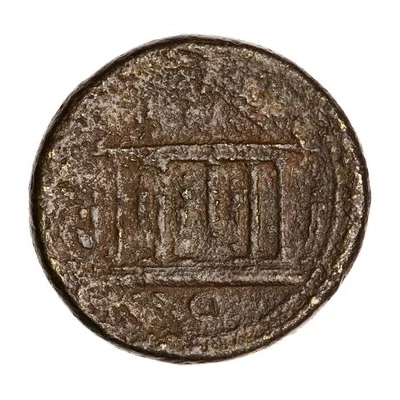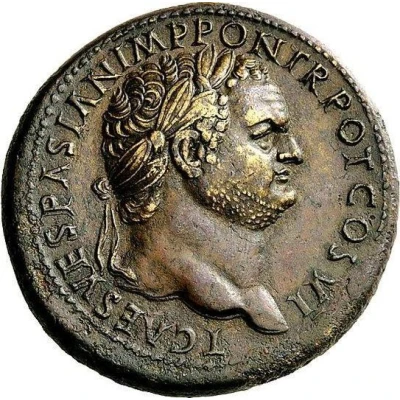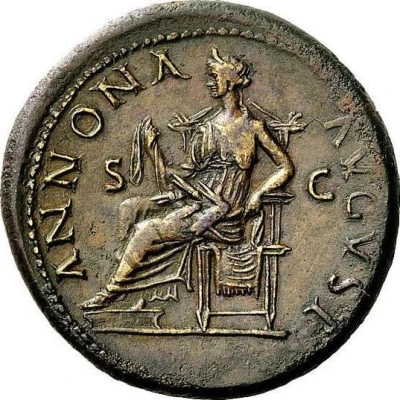Sestertius - Vespasian SPES AVGVSTA S C; Spes
| Bronze | - | - |
| Issuer | Rome › Roman Empire (27 BC - 395 AD) |
|---|---|
| Emperor | Vespasian (Titus Flavius Vespasianus) (69-79) |
| Type | Standard circulation coin |
| Years | 77-78 |
| Value | 1 Sestertius = ¼ Denarius |
| Currency | Denarius, Reform of Augustus (27 BC – AD 215) |
| Composition | Bronze |
| Shape | Round (irregular) |
| Technique | Hammered |
| Demonetized | Yes |
| Updated | 2024-10-06 |
| Numista | N#249906 |
|---|---|
| Rarity index | 100% |
Reverse
Spes standing left, offering flower to three Roman soldiers.
Script: Latin
Lettering: SPES AVGVSTA S C
Translation:
Spes Augusta. Senatus Consultum.
Venerable hope. Decree of the senate.
Comment
Source: Online Coins of the Roman Empire (OCRE)Interesting fact
The Sestertius coin was a significant denomination in ancient Rome, equal to one-fourth of a denarius, which was the standard unit of currency at the time. The Sestertius coin was first introduced during the reign of Emperor Vespasian, who ruled from 69 to 79 AD, and it remained in circulation until the late 3rd century AD. The obverse (front) side of the coin features an image of Emperor Vespasian, while the reverse (back) side features a personification of the goddess Spes (Hope), which is represented by a woman holding a flower and a raised hand. The inscription "SPES AVGVSTA S C" stands for "Spes Augusta, Senatus Consulto" (meaning "August Hope, by decree of the Senate"). This particular coin is made of bronze, which was a common material for coins in ancient Rome, especially for lower denomination coins like the Sestertius. The use of bronze for coins was preferred because it was abundant, durable, and less expensive than other metals like gold or silver. Overall, the Sestertius - Vespasian (SPES AVGVSTA S C; Spes) (77-78) coin is an interesting piece of history that provides insight into the economic, political, and cultural aspects of ancient Rome during the reign of Emperor Vespasian.



